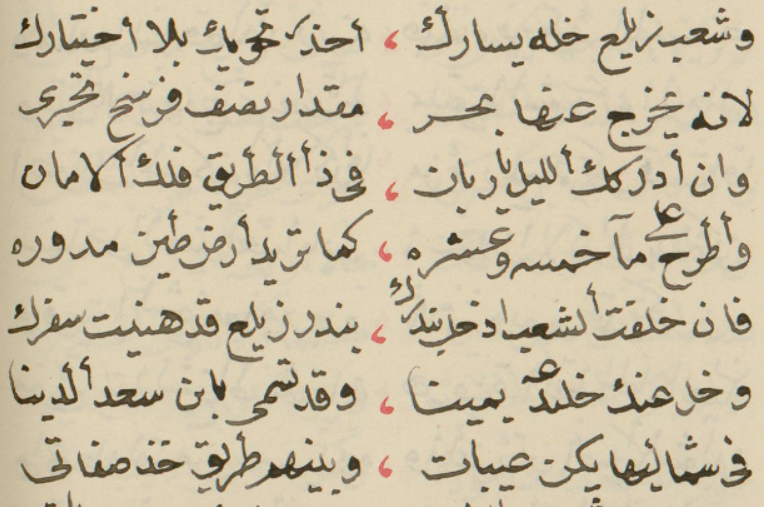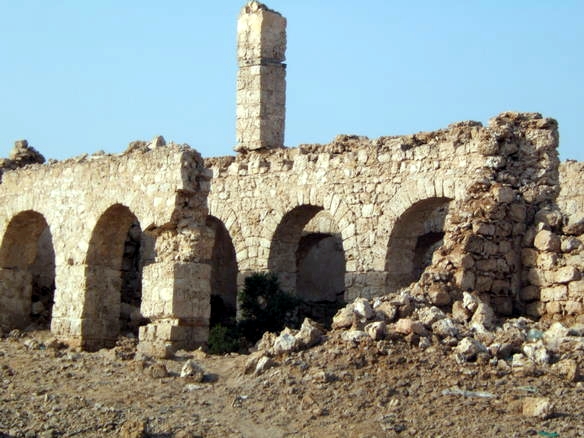|
Ganz Province
Ganz province (Amharic: ገንዝ), also known as Ganazo or Ganzo was a region surrounding what is now the capital region and city of Addis Ababa in Ethiopia. Islamic state Originally an Islamic state ruled by a Garad,Encyclopaedia Aethiopica: D-Ha pg. 686 Ganz was part of the unsuccessful Islamic alliance that opposed Amda Seyon I in the 1320s. The polity allied with the Sultanate of Adal again in Ahmedudin Badlay's war to retake Dawaro from Abyssinian control, but Ganz was defeated and became an Abyssinian province. Imam Ahmed Gurey's forces recaptured Ganz during his jihad, but the territory returned to Abyssinian control soon after his death. End of Ganz Ganz was occupied in the Oromo migrations by the Tulama Oromo, though the territory was conquered in the 19th century by the Kingdom of Shewa, who made Addis Ababa Addis Ababa (; am, አዲስ አበባ, , new flower ; also known as , lit. "natural spring" in Oromo), is the capital and largest city of Ethiopia. It is a ... [...More Info...] [...Related Items...] OR: [Wikipedia] [Google] [Baidu] |
Amharic
Amharic ( or ; (Amharic: ), ', ) is an Ethiopian Semitic language, which is a subgrouping within the Semitic branch of the Afroasiatic languages. It is spoken as a first language by the Amharas, and also serves as a lingua franca for all other populations residing in major cities and towns of Ethiopia. The language serves as the official working language of the Ethiopian federal government, and is also the official or working language of several of Ethiopia's federal regions. It has over 31,800,000 mother-tongue speakers, with more than 25,100,000 second language speakers. Amharic is the most widely spoken language in Ethiopia, and the second most spoken mother-tongue in Ethiopia (after Oromo). Amharic is also the second largest Semitic language in the world (after Arabic). Amharic is written left-to-right using a system that grew out of the Geʽez script. The segmental writing system in which consonant-vowel sequences are written as units is called an ''abugida'' (). The ... [...More Info...] [...Related Items...] OR: [Wikipedia] [Google] [Baidu] |
Addis Ababa
Addis Ababa (; am, አዲስ አበባ, , new flower ; also known as , lit. "natural spring" in Oromo), is the capital and largest city of Ethiopia. It is also served as major administrative center of the Oromia Region. In the 2007 census, the city's population was estimated to be 2,739,551 inhabitants. Addis Ababa is a highly developed and important cultural, artistic, financial and administrative centre of Ethiopia. Addis Ababa was portrayed in the 15th century as a fortified location called "Barara" that housed the emperors of Ethiopia at the time. Prior to Emperor Dawit II, Barara was completely destroyed during the Ethiopian–Adal War and Oromo expansions. The founding history of Addis Ababa dates back in late 19th-century by Menelik II, Negus of Shewa, in 1886 after finding Mount Entoto unpleasant two years prior. At the time, the city was a resort town; its large mineral spring abundance attracted nobilities of the empire, led them to establish permanent settlement ... [...More Info...] [...Related Items...] OR: [Wikipedia] [Google] [Baidu] |
Ethiopia
Ethiopia, , om, Itiyoophiyaa, so, Itoobiya, ti, ኢትዮጵያ, Ítiyop'iya, aa, Itiyoppiya officially the Federal Democratic Republic of Ethiopia, is a landlocked country in the Horn of Africa. It shares borders with Eritrea to the north, Djibouti to the northeast, Somalia to the east and northeast, Kenya to the south, South Sudan to the west, and Sudan to the northwest. Ethiopia has a total area of . As of 2022, it is home to around 113.5 million inhabitants, making it the 13th-most populous country in the world and the 2nd-most populous in Africa after Nigeria. The national capital and largest city, Addis Ababa, lies several kilometres west of the East African Rift that splits the country into the African and Somali tectonic plates. Anatomically modern humans emerged from modern-day Ethiopia and set out to the Near East and elsewhere in the Middle Paleolithic period. Southwestern Ethiopia has been proposed as a possible homeland of the Afroasiatic langua ... [...More Info...] [...Related Items...] OR: [Wikipedia] [Google] [Baidu] |
Garad
Garad ( Harari: ገራድ, , , Oromo: ''Garaada'') is a term used to refer to a clan leader or regional administrator. It was used primarily by Muslims in the Horn of Africa that were associated with Islamic states, most notably the Adal Sultanate. Etymology The origin of the term ''Garad'' is uncertain. According to Enrico Cerulli, Garad originates from the era of the Adal emirate. Garad denotes a headman within a ''"Gaar"'' (clan). In the Somali language ''Garad'' roughly translates to "chief" or "wise man", as well as "wisdom". Garad also denotes a ''"chief"'' in Harari and Silt'e languages respectively. History Several Muslim states and dominions including Hadiya Sultanate, Sultanate of Darfur, Ganz province, Harla and Somali Sultanate leaders were known as Garads. Within Somali clans the use of the traditional hereditary title ''"Garad"'' is most widespread among the Dhulbahante and Karanle and was also used by the Habr Awal up until the 1940s. According to traditi ... [...More Info...] [...Related Items...] OR: [Wikipedia] [Google] [Baidu] |
Amda Seyon I
Amda Seyon I ( gez, ዐምደ ፡ ጽዮን , am, አምደ ፅዮን , "Pillar of Zion"), throne name Gebre Mesqel (ገብረ መስቀል ) was Emperor of Ethiopia from 1314 to 1344 and a member of the Solomonic dynasty. He is best known in his chronicles as a heroic warrior against the Muslims, and is sometimes considered to have been the founder of the Ethiopian state. Most of his wars were against the Muslim kingdoms to the southeast, which he was able to fight and generally defeat one by one, despite their plans to unite against him. Hence, he substantially enlarged his kingdom by gradually incorporating a number of neighboring states. His conquests of Muslim borderlands greatly expanded Ethiopian territory and power in the region, which would be maintained for centuries after his death. Amda Seyon asserted the strength of the new Solomonic dynasty and therefore legitimized it. These expansions further provided for the spread of Christianity to frontier areas, sparking ... [...More Info...] [...Related Items...] OR: [Wikipedia] [Google] [Baidu] |
Sultanate Of Adal
The Adal Sultanate, or the Adal Empire or the ʿAdal or the Bar Saʿad dīn (alt. spelling ''Adel Sultanate, ''Adal ''Sultanate'') () was a medieval Sunni Muslim Empire which was located in the Horn of Africa. It was founded by Sabr ad-Din II after the fall of the Sultanate of Ifat. The kingdom flourished circa 1415 to 1577.. The sultanate and state were established by the local inhabitants of Zeila. or the Harar plateau. At its height, the polity under Sultan Badlay controlled the territory stretching from Somaliland to the port city of Suakin in Sudan. The Adal Empire maintained a robust commercial and political relationship with the Ottoman Empire. Etymology Adal is believed to be an abbreviation of Havilah. Eidal or Aw Abdal, was the Emir of Harar in the eleventh century. In the thirteenth century, the Arab writer al-Dimashqi refers to the Adal Sultanate's capital, Zeila, by its Somali name "Awdal" ( so, "Awdal"). The modern Awdal region of Somaliland, which was part of ... [...More Info...] [...Related Items...] OR: [Wikipedia] [Google] [Baidu] |
Ahmed Gurey
Ahmad ibn Ibrahim al-Ghazi ( so, Axmed Ibraahim al-Qaasi or Axmed Gurey, Harari: አሕመድ ኢብራሂም አል-ጋዚ, ar, أحمد بن إبراهيم الغازي ; 1506 – 21 February 1543) was an imam and general of the Adal Sultanate. Imam Ahmad (commonly named Ahmed ''Gurey'' ''in Somali, and ''Gura'' in Afar, both meaning "the left-handed" or "the southpaw")'', invaded the Ethiopian Empire under the Sultanate of Adal during the Ethiopian-Adal War. Ethnicity Imam Ahmad is regarded by most scholars as an ethnic Somali. However, a few historians have dismissed the Somali theory. Merid Wolde Aregay argued Ahmed ibn Ibrahim al-Ghazi belonged to the Harla dynasty of rulers through his father. Mohammed Hassan also states Ahmed was the son of Garad Ibrahim, a provincial governor of Sim in Harla realm. According to Taddesse Tamrat, although various Somali clans were involved in the conquest, Ahmed was not a Somali and had links to the Semitic-speaking Wâlasma aristoc ... [...More Info...] [...Related Items...] OR: [Wikipedia] [Google] [Baidu] |
Oromo Migrations
The Great Oromo Expansions, also known as the Oromo migrations, were a series of expansions, outlined by a Ethiopian monk named Bahrey, in the 16th and 17th centuries by the Borona segment of the Oromo people from southern Ethiopia. Who expanded into northern regions of Ethiopia. Historiography Because the Oromo did not keep a written record of the expansion, this article must refer to Ethiopian, Portuguese and Arabic sources for the reasons behind the expansion. In particular, a 16th-century Ethiopian monk, named Bahrey, is the foremost source on the expansion. Written in Ge'ez, his book was called the ''History of the Galla '' ( Ge'ez: ዜናሁ ፡ ለጋላ ''zēnahu legalla''), "Galla" being an older name by which the Portuguese, Somalis and Italians referred to Oromos, but it is now considered as pejorative. The book was written in 1593 and detailed the expansions from 1522 to his age. Further information can be gleaned from other contemporaries such as the Ethiopian m ... [...More Info...] [...Related Items...] OR: [Wikipedia] [Google] [Baidu] |
Shewa
Shewa ( am, ሸዋ; , om, Shawaa), formerly romanized as Shua, Shoa, Showa, Shuwa (''Scioà'' in Italian language, Italian), is a historical region of Ethiopia which was formerly an autonomous monarchy, kingdom within the Ethiopian Empire. The modern Ethiopian capital Addis Ababa is located at its center. Modern Shewa includes the historical Endagabatan province. The towns of Debre Berhan, Antsokia, Ankober, Entoto and, after Shewa became a Provinces of Ethiopia, province of Ethiopia, Addis Ababa have all served as the capital of Shewa at various times. Most of northern Shewa, made up of the districts of Menz, Tegulet, Yifat (Ethiopia), Yifat, Menjar and Bulga, Ethiopia, Bulga, is populated by Christian Amhara people, Amharas, while southern Shewa is inhabited by the Gurages and eastern Shewa has large Oromo and Argobba people, Argobba Islam in Ethiopia, Muslim populations. The monastery of Debre Libanos, founded by Saint Tekle Haymanot, is located in the district of Selale, al ... [...More Info...] [...Related Items...] OR: [Wikipedia] [Google] [Baidu] |
History Of Ethiopia
Ethiopia is one of the oldest countries in Africa, the emergence of Ethiopian civilization dates back thousands of years. Due to migration and imperial expansion, it grew to include many other primarily Afro-Asiatic-speaking communities, including Amhara, Oromos, Somalis, Tigray, Afars, Sidama, Gurage, Agaw and Harari, among others. One of the early kingdoms to rise to power in the territory was the kingdom of D'mt in the 10th century BC, which established its capital at Yeha. In the first century AD the Aksumite Kingdom rose to power in the Tigray Region with its capital at Aksum and grew into a major power on the Red Sea, subjugating Yemen and Meroe. In the early fourth century, during the reign of Ezana, Christianity was declared the state religion. Ezana's reign is also when the Aksumites first identified themselves as "Ethiopians", and not long after, Philostorgius became the first foreign author to call the Aksumites Ethiopians. The Aksumite empire fell into decline w ... [...More Info...] [...Related Items...] OR: [Wikipedia] [Google] [Baidu] |




_03.jpg)